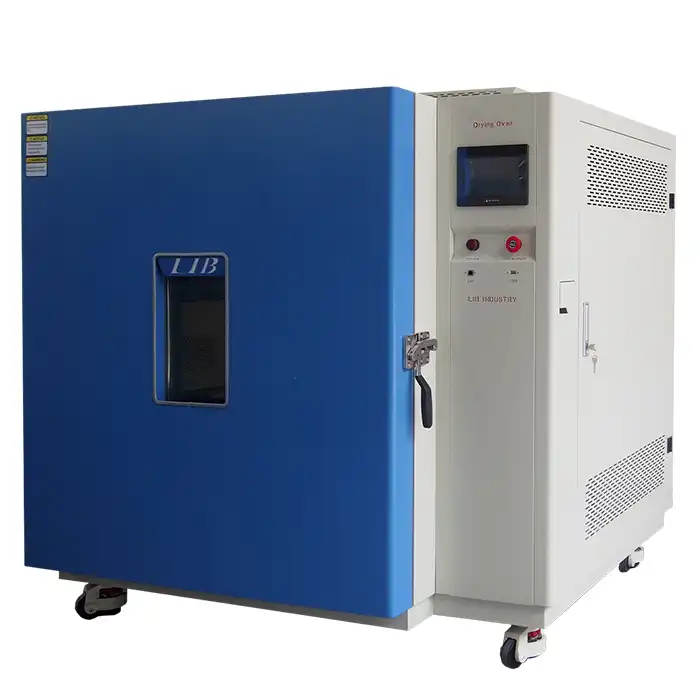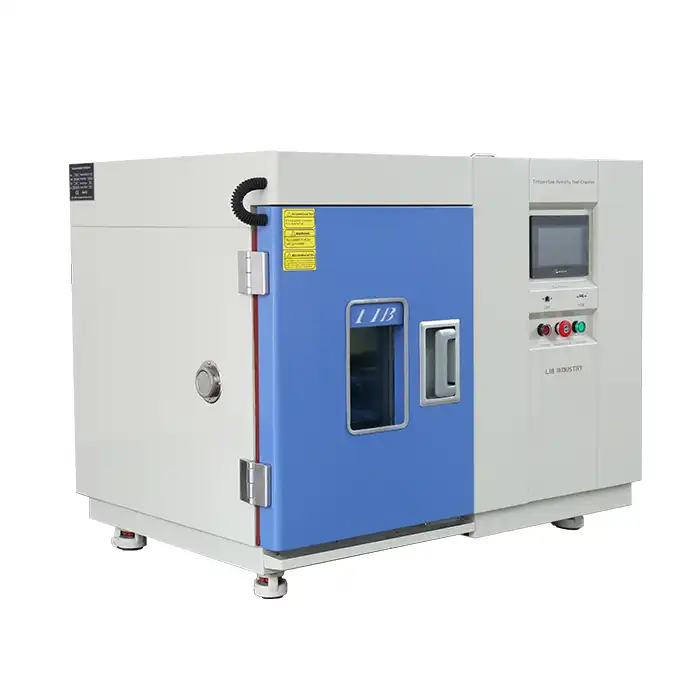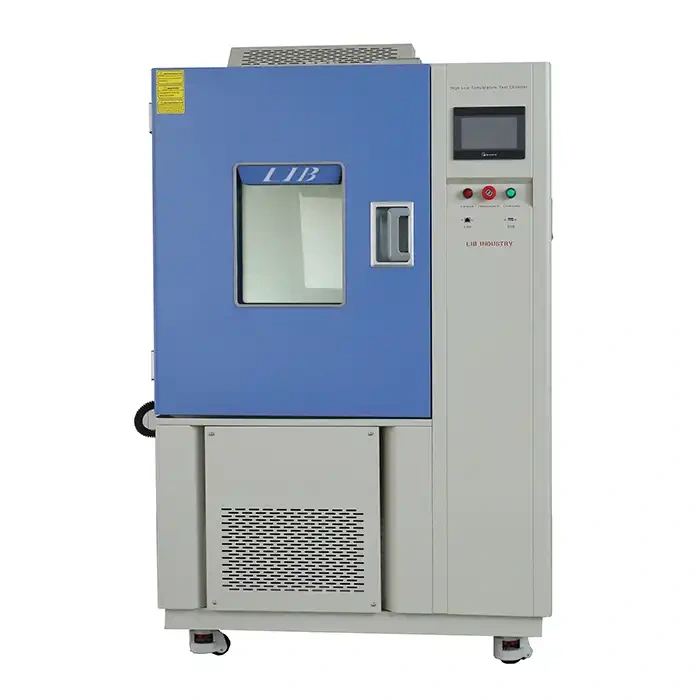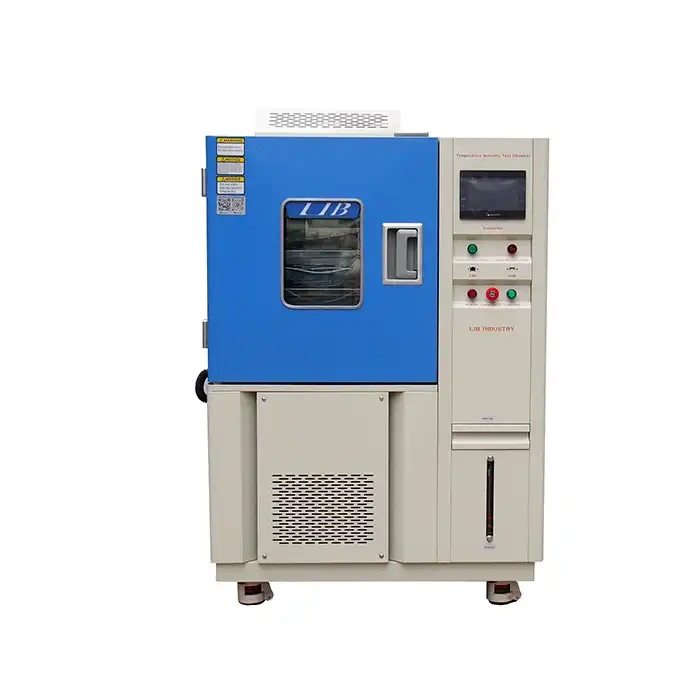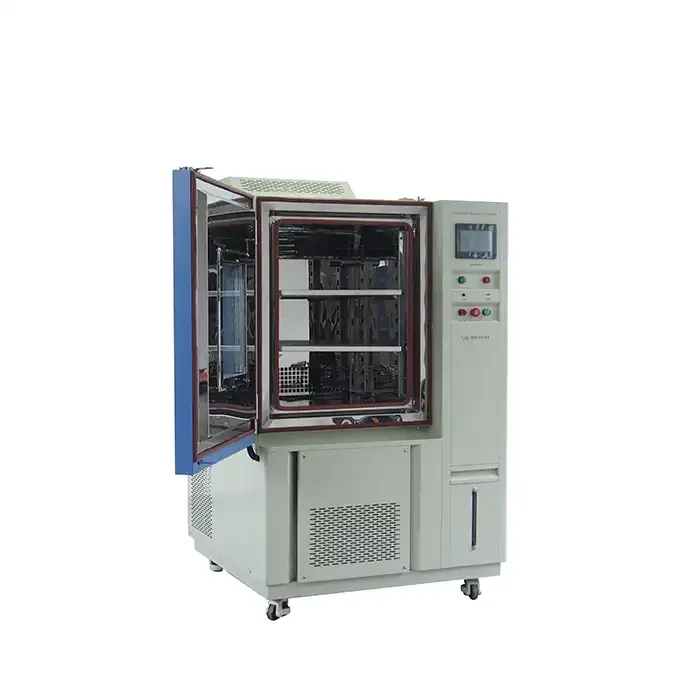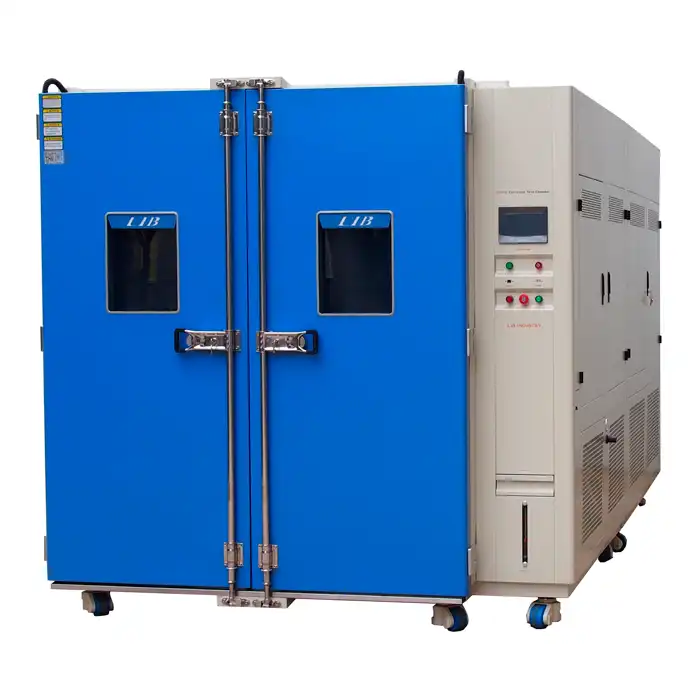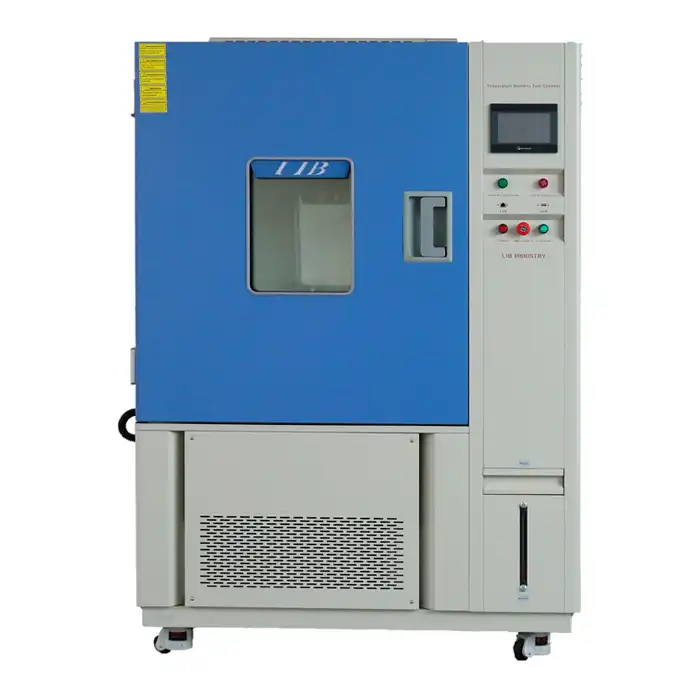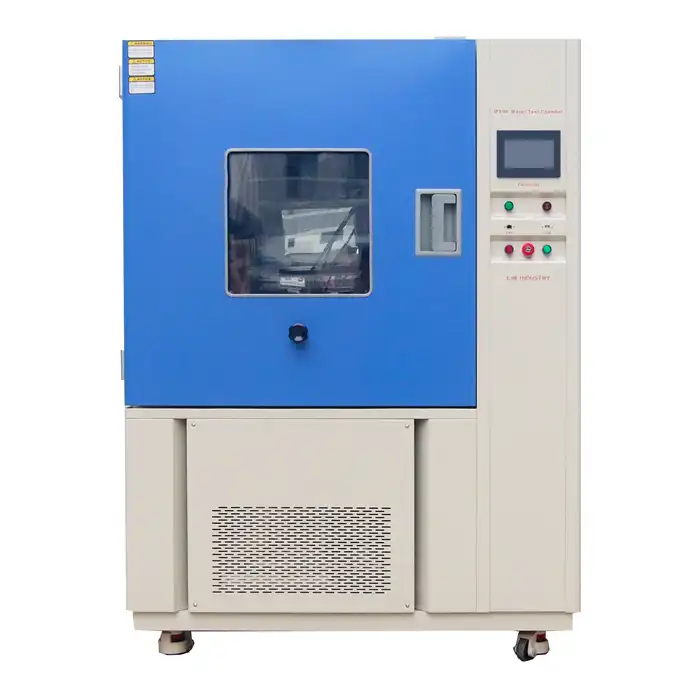8 Reasons to Choose A Benchtop Environmental Test Chamber
In the world of product testing and quality assurance, benchtop environmental test chambers have become indispensable tools. These compact yet powerful devices simulate various environmental conditions, allowing manufacturers to assess product performance and durability under diverse circumstances. Let's explore the compelling reasons why a benchtop environmental test chamber might be the perfect addition to your testing arsenal.

Space-Efficient Design
One of the most significant advantages of benchtop environmental test chambers is their compact size. Unlike their larger counterparts, these chambers are designed to fit comfortably on a laboratory bench or workstation, making them ideal for facilities with limited space.
Maximizing Laboratory Real Estate
In today's fast-paced research and development environments, every square foot of laboratory space is precious. Benchtop chambers allow you to maximize your available area without compromising on testing capabilities.
Portability and Flexibility
The relatively small size of benchtop chambers makes them easier to move and relocate as needed. This flexibility can be particularly beneficial for organizations with evolving laboratory layouts or those who need to conduct tests in different locations.
Integration with Existing Setups
Benchtop environmental test chambers can seamlessly integrate with existing laboratory setups, allowing for efficient workflow and space utilization. Their compact design enables them to be placed alongside other testing equipment or instruments, creating a cohesive and productive testing environment.
Cost-Effective Solution
Investing in a benchtop environmental test chamber can be a cost-effective decision for many organizations, especially those with specific testing needs or budget constraints.
Lower Initial Investment
Compared to full-sized environmental chambers, benchtop models typically come with a lower price tag. This reduced initial investment makes them more accessible to smaller companies or research institutions with limited budgets. The TH-50 model is only half as tall as a man, occupies a small space, and moves very flexibly.

Reduced Operating Costs
Due to their smaller size, benchtop chambers generally consume less energy than larger models. This translates to lower operating costs over time, making them an economical choice for long-term use.
Targeted Testing Capabilities
For organizations that don't require the extensive range of conditions or large sample sizes accommodated by full-sized chambers, benchtop models offer a more focused and cost-effective solution. They provide the necessary testing capabilities without the added expense of features that may not be utilized.
Versatility in Testing Applications
Despite their compact size, benchtop environmental test chambers offer remarkable versatility in terms of testing applications. They can simulate a wide range of environmental conditions, making them suitable for various industries and research fields.
Temperature and Humidity Control
Most benchtop chambers excel in temperature and humidity control, allowing for precise simulation of different climatic conditions. This capability is crucial for testing products that may be exposed to varying environments during their lifecycle.
Specialized Testing Modes
Many benchtop models offer specialized testing modes such as thermal shock, freeze-thaw cycles, or accelerated aging. These features enable comprehensive testing of materials and products under extreme or rapidly changing conditions.
Industry-Specific Applications
From electronics and automotive components to pharmaceuticals and cosmetics, benchtop environmental test chambers find applications across numerous industries. Their adaptability makes them valuable tools for quality control, research and development, and regulatory compliance testing in diverse sectors.
Precise Control and Accuracy
Benchtop environmental test chambers are engineered to provide precise control over testing conditions, ensuring accurate and reliable results.
Advanced Control Systems
Modern benchtop chambers are equipped with sophisticated control systems that allow for precise regulation of temperature, humidity, and other environmental parameters. These systems often feature intuitive interfaces and programmable settings for ease of use.
Rapid Stabilization
The compact size of benchtop chambers allows for quicker stabilization of test conditions compared to larger chambers. This rapid response enables more efficient testing processes and faster turnaround times.
Uniform Conditions
Despite their smaller size, well-designed benchtop environmental test chambers maintain uniform conditions throughout the testing space. This uniformity is crucial for ensuring consistent and reliable test results across different samples or test runs.
Enhanced Productivity and Workflow
Incorporating a benchtop environmental test chamber into your testing processes can significantly enhance productivity and streamline workflows.
Reduced Setup Time
The compact size and user-friendly interfaces of benchtop chambers often result in reduced setup times. This efficiency allows researchers and technicians to initiate tests quickly and focus more on data analysis and interpretation.
Integration with Data Acquisition Systems
Many benchtop environmental test chambers can be integrated with data acquisition systems, allowing for automated data collection and analysis. This integration enhances the overall efficiency of the testing process and reduces the potential for human error in data recording.
Multi-User Accessibility
The benchtop design makes these chambers easily accessible to multiple users. This accessibility can foster collaboration among team members and facilitate more efficient use of laboratory resources.
Customization and Flexibility
Benchtop environmental test chambers offer a high degree of customization and flexibility to meet specific testing requirements.
Modular Design
Many benchtop chambers feature modular designs that allow for easy upgrades or modifications. This flexibility enables users to adapt the chamber to evolving testing needs without replacing the entire unit.
Customizable Test Programs
Advanced benchtop chambers often come with programmable controls that allow users to create custom test profiles. This feature is particularly useful for specialized testing protocols or when simulating specific environmental scenarios.
Accessories and Add-ons
A wide range of accessories and add-ons are available for benchtop environmental test chambers, allowing users to expand their testing capabilities. These may include specialized shelving, additional sensors, or interfaces for external equipment.
Compliance with Industry Standards
Benchtop environmental test chambers are designed to meet various industry standards and regulatory requirements, ensuring the validity and reliability of test results.
Adherence to Testing Standards
Many benchtop chambers are built to comply with international testing standards such as those set by ASTM, IEC, or MIL-STD. This compliance ensures that tests conducted in these chambers meet recognized industry benchmarks.
Calibration and Validation
Reputable manufacturers provide calibration and validation services for their benchtop chambers, ensuring that the equipment maintains its accuracy and reliability over time. This ongoing support is crucial for maintaining the integrity of test results.
Documentation and Traceability
Modern benchtop environmental test chambers often come with features that support comprehensive documentation and traceability of test conditions and results. This capability is essential for regulatory compliance and quality assurance purposes.
Environmental Considerations
As sustainability becomes an increasingly important factor in laboratory operations, benchtop environmental test chambers offer several environmentally friendly advantages.
Energy Efficiency
The compact size of benchtop chambers typically translates to lower energy consumption compared to larger models. This energy efficiency not only reduces operating costs but also minimizes the environmental impact of testing operations.
Reduced Resource Usage
Benchtop chambers often require fewer resources for operation and maintenance compared to larger environmental chambers. This reduction in resource usage aligns with sustainability goals and can contribute to a smaller ecological footprint for laboratory operations.
Longevity and Durability
Well-constructed benchtop environmental test chambers are built to last, with many models offering years of reliable service. This durability reduces the need for frequent replacements, thereby minimizing waste and resource consumption over time.
Conclusion
In conclusion, benchtop environmental test chambers offer a compelling combination of efficiency, versatility, and cost-effectiveness. Their compact design, precise control capabilities, and adaptability to various testing needs make them an excellent choice for organizations looking to enhance their testing capabilities without compromising on space or budget. As technology continues to advance, these powerful yet compact devices are likely to play an increasingly important role in quality assurance and product development across numerous industries.
Contact Us
If you're considering incorporating a benchtop environmental test chamber into your testing processes or would like more information about our range of environmental testing solutions, we invite you to contact us. Our team of experts is ready to help you find the perfect solution for your specific needs. Reach out to us at info@libtestchamber.com to explore how our benchtop environmental test chambers can elevate your testing capabilities and drive your product development forward.
References
1. "Environmental Testing Handbook: A Guide to Test Chamber Selection and Use" by John D. Packard.
2. "Principles of Environmental Physics" by John Monteith and Mike Unsworth.
3. "Handbook of Environmental Degradation of Materials" edited by Myer Kutz.
4. "Accelerated Testing: Statistical Models, Test Plans, and Data Analysis" by Wayne Nelson.
5. "Environmental Stress Screening: Guidelines for Conducting Environmental Stress Screening on Electronic Equipment" by Michael Pecht.
6. "Reliability Engineering: Theory and Practice" by Alessandro Birolini.



